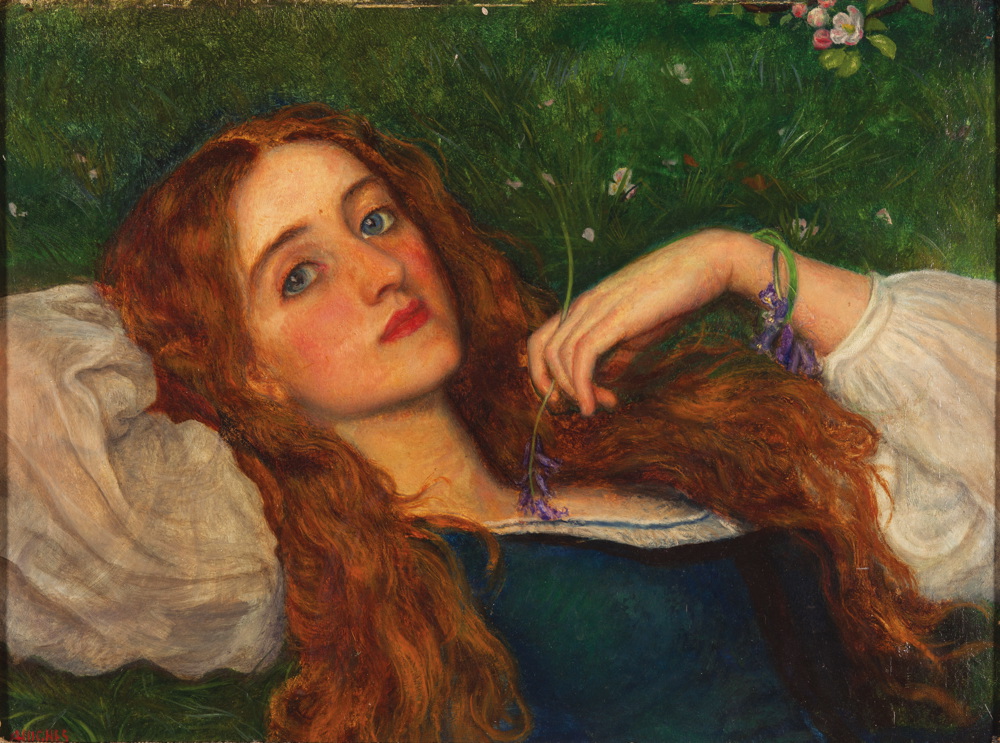Shock of the old
The Pre-Raphaelites shook the art world with their bold and imaginative work. But it took the traders of Liverpool to fund them
Considering the praise now granted much Pre-Raphaelite art, it’s easy to forget what a shock the movement’s practitioners initially dealt the established art world. Another often overlooked fact is that although the Brotherhood’s major players were based in southern England it fell to the open-minded, astute, financially secure collectors of Liverpool to provide the artists with the spiritual and monetary support then lacking in the nation’s capital. Without patronage from Merseyside’s wealthy traders the legacy left by the 19th century’s Pre-Raphaelites would be a very different one indeed.
Formed to directly oppose the Royal Academy’s devotion to Renaissance master Raphael, the Pre-Raphaelite Brotherhood was focused on the themes of religion, literature and poetry. With added emphasis placed upon love and misery, death and madness, this collection of young upstarts were principally inspired by the influential writer John Ruskin’s insistence that artists should ‘go to nature’. Their work then, was infused with unprecedented realism and bright colours whilst frequently shocking the then establishment with an unwillingness to flatter their subject. They tackled genuine social issues, depicting poverty, emigration, prostitution and sexual morality in a manner never previously seen. Rich with meaning – often hidden or deeply encoded – the work was slow to become accepted yet is ultimately enduring.
“This younger, new generation really faced such incredible conservatism in London.”
Set to show more than 120 paintings, Pre-Raphaelites: Beauty and Rebellion is about to open at the dramatic Walker Art Gallery in Liverpool. While displaying many works never before seen in public, the exhibition also promises to emphasise Liverpool’s then huge importance as a cultural centre. Principally inspired by banker, abolitionist and Liberal politician William Roscoe, the Liverpool Academy of Art was founded in 1810 to help promote cultural philanthropy in a vibrant, progressive town. Following the formation of the Pre-Raphaelite Brotherhood during 1848 (17 years after Roscoe’s death), the Academy began to provide the movement’s founders with exhibition space and a thriving marketplace, both lacking in London owing to the Royal Academy’s refusal to embrace this young, vivacious group of artists. Liverpool went so far as to pay for the transportation of artworks to the city and, should said work fail to sell, the costs of returning the painting to the artist. So what exactly was the London art world so loath to accept?
“There was a fairly stultified atmosphere there during the 1850s,” explains Christopher Newall, one of the world’s leading Pre-Raphaelite experts and the man charged with selecting work for this exhibition. “The Royal Academy didn’t want its painting style, its flatness, you could say, exposed by these artists who were so much more idealistic about what art should be. This younger, new generation really faced such incredible conservatism in London but the Liverpool Academy was very open to them: a truly remarkable institution.”
![Monna Vanna, 1866, Dante Gabriel Rossetti (c) Tate, London [2016]](http://www.bigissuenorth.com/wp-content/uploads/2016/02/Monna-Vanna-1866-Dante-Gabriel-Rossetti-c-Tate-London-2016rgb-500x581.jpg)
Newall goes on to talk about the Pre-Raphaelites being both principled and political while “burning with a sense of wanting change in society at large as well as just the art world”. So just how did the collected works of Dante Gabriel Rossetti, John Everett Millais, William Holman Hunt, Ford Madox Brown and others become so widely loved? Are there parallels to be drawn between, say, Pre-Raphaelite art and the mass market appeal of television costume dramas?
“No, I don’t think it’s like that at all,” says Newall. “That Downton Abbey thing is like a warm bath for people to sink back into but Pre-Raphaelism, at least in its purest form, is quite challenging and in your face. Perhaps the Brotherhood did begin to produce escapist, even rather soothing art later on – and this could be what the public at large currently perceive – but initially it was not intended to be comforting but a rather alarming mix of religious and sexual imagery.”
How about similarities between the Pre-Raphaelite Brotherhood and the most recent artistic group to seriously shock the mainstream – the Young British Artists? “The thing that always strikes me about the YBAs is how most of the really remarkable things they did happened when they were living obscure lives in Shoreditch, when no one apart from a few far-sighted critics had heard of them,” Newall says. “They hadn’t become the source of media attention and neither had the Pre-Raphaelites in the early 1850s, when their real insight, their real desire for change, occurred most noticeably. By the late 1850s they were getting to be known more widely and began to manipulate their publicity machine.”
Bukantas draws comparisons between the Pre-Raphaelites and the early days of rock ‘n’ roll and punk.
“Some people at the time found it too outrageous but with hindsight you can see all these movements provided key moments with so much beneath the surface.
“This exhibition tells part of the Pre-Raphaelite story that hasn’t been told before. There will be familiar characters but you need to think of us as having written a new script.
“The artists we’re showing were young, distinctive characters. They lived relatively recently so people can still identify with them and they created, in some respects, entire new lifestyles.
“So the ‘beauty’ aspect of the exhibition’s title relates not just to the more obvious traits of some Pre-Raphaelite art – Rossetti’s women, the escapism of Arthurian worlds and so on – but to artists such as William Davis, from the Liverpool School, who could find beauty in the most mundane of scenes, bypass the more predictable part of a landscape and draw attention to what others may not notice.
“As for ‘rebellion’, these artists were quite simply trendsetters.”
Pre-Raphaelites: Beauty and Rebellion, Walker Art Gallery, 12 February-5 June

Leave a reply
Your email address will not be published.